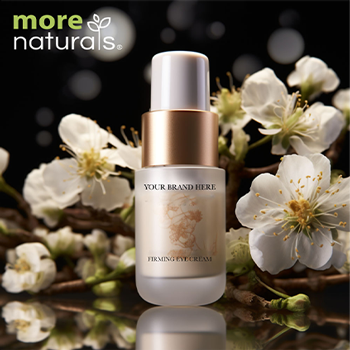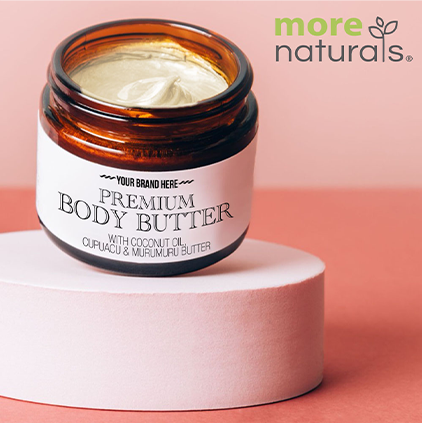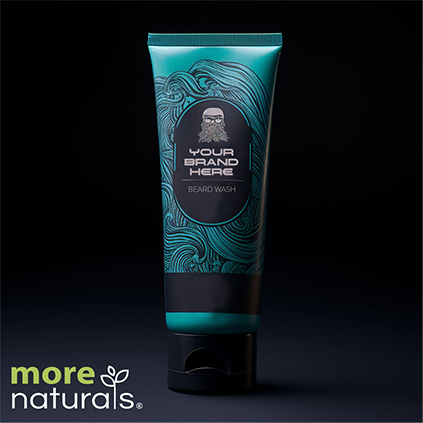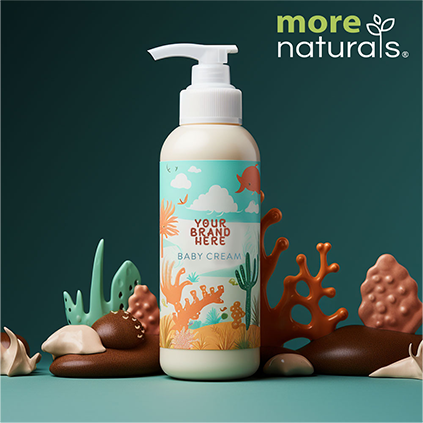
Effective inventory management strategies are critical to the success of any beauty brand. Without proper control over inventory, a company can experience significant financial losses due to stockouts or overstocking. Moreover, poor inventory management practices can lead to decreased customer satisfaction and loss of market share.
At More Naturals, we understand that effective inventory management is essential for our client’s businesses. However, as a contract manufacturers for beauty brands, we have seen firsthand how companies struggle with managing their inventories efficiently. Therefore, this article will discuss some key inventory management strategies that your beauty brand can implement to optimize efficiency and profitability while meeting customers’ demands. We believe these strategies will help you gain an edge in today’s highly competitive beauty industry by enhancing your ability to innovate and respond quickly to changing market trends.
Understanding Your Inventory Needs And Goals
Effective inventory management is crucial for the success of any beauty brand. It involves tracking your inventory levels, optimizing stock availability, and ensuring that you have enough products to meet customer demand while minimizing overstocking. At More Naturals, we understand the importance of effective inventory management in achieving a profitable business model.
Inventory tracking is essential to managing your beauty brand’s inventory needs. This process helps to monitor product movement from production to sales and enables you to identify trends in consumer behavior. With accurate inventory tracking, you can determine which products are selling well and which are not performing as expected. By analyzing this data, you can make informed decisions about what products to produce more or less.
Optimizing your stock availability is another critical aspect of effective inventory management. Overstocking can lead to increased storage costs, spoilage, and waste. On the other hand, understocking can result in lost revenue due to unfulfilled orders or dissatisfied customers. To optimize your stock levels effectively, analyzing historical sales data and future projections is essential.
At More Naturals, we work with our clients to develop customized strategies for their unique inventory needs and goals. Our expert team employs various tools and techniques, such as forecasting demand based on past performance analysis and utilizing technology-driven solutions like automated replenishment systems. Doing so ensures that our clients always have the right amount of stock available at any given time without excessive overheads.
To continue developing an efficient system for managing inventories within a beauty company requires understanding how to forecast demand accurately while adequately planning for the future. Therefore, it’s essential always to be aware of market changes and review previous sales performances regularly as they will aid in anticipating future demands better than relying solely on intuition or guesswork alone.
Forecasting Demand And Planning For The Future
Understanding your inventory needs and goals is crucial for effective inventory management strategies in the beauty industry. Once you clearly understand what products you need to stock, it’s vital to forecast demand and plan for the future. This involves analyzing customer feedback, collaborating with influencers, and implementing automated inventory systems.
Forecasting demand requires gathering information from various sources, such as sales data, market trends, and customer feedback analysis. More Naturals recommends using analytics tools to help identify patterns and make predictions. Collaborating with influencers can provide valuable insights into emerging trends and consumer preferences, informing product development decisions.
Customer feedback analysis is another essential component of forecasting demand. Gathering feedback on product quality, packaging design, pricing structures, and other factors can be invaluable when making informed decisions about inventory management. In addition, it’s essential to stay up-to-date with changing consumer preferences to adapt quickly to new market demands.
Finally, an automated inventory system can streamline the process of managing your stock levels by providing real-time tracking of inventory levels across multiple channels. This allows businesses to react quickly to changes in demand without worrying about running out of stock or overstocking their shelves.
Implementing Automated Inventory Systems
As a beauty brand, it is crucial to keep track of inventory levels to avoid stockouts or overstocking. One way to achieve this is by implementing an automated inventory system. This technology integration can help streamline the entire process from acquisition and storage to sales and delivery.
Before investing in such systems, brands must conduct an ROI analysis. The cost-benefit ratio proves whether automation offers value for money. While they may require significant upfront investments, these systems ultimately save time and reduce maintenance costs in the long run. Additionally, employee training ensures the efficient use of such equipment and further maximizes investment returns.
Automated systems are not without their challenges; thus, proper maintenance is vital in ensuring their continued functionality. Regular upkeep helps identify problems early and prevent potential downtime that could lead to losses. It also prolongs the lifespan of the machinery while minimizing repair expenses.
Conducting Regular Inventory Audits
Conducting regular inventory audits is necessary for any beauty brand that wants to ensure the success of its business. Inventory tracking helps you understand how much stock you have, where it’s located, and when you need to order more. Depending on your company’s size and resources, this process can be done manually or through an automated system.
To conduct effective inventory audits, there are several steps you should follow to make sure everything runs smoothly. First, establish clear procedures for your stocktaking process, including who will be responsible for counting items and how often these counts should occur. Second, create a standard set of metrics that will help you measure performance over time. Third, use technology to streamline the process as much as possible, including barcode scanners or RFID tags.
Once you’ve established a reliable routine for conducting inventory audits, it’s crucial to analyze the results regularly. Use data from past audits to identify trends in demand patterns and adjust your ordering accordingly. Additionally, keep track of any discrepancies between what your records show and what exists in your physical stockroom.
Following these guidelines for successful inventory management practices at More Naturals can reduce waste and improve efficiency throughout our supply chain. Our team maintains accurate record-keeping while ensuring all products are stored safely according to industry standards. Through consistent monitoring of our inventory levels with regular audits and ongoing analysis of sales trends across all channels we operate in – online retail platforms like Amazon Marketplace or Shopify storefronts; brick-and-mortar shops carrying our brands’ goods locally or globally – we stay ahead of potential issues before they become problems.
Developing Effective Supplier Relationships
Regular inventory audits are critical to maintaining a healthy supply chain, but it’s not enough on its own. Your beauty brand also needs effective supplier relationships to ensure you’re getting the most out of your inventory management strategies.
Supplier communication is critical to developing these relationships. You must be clear about what you expect from your suppliers and ensure they know how critical timely deliveries are to your business. Regularly checking in with them can help avoid misunderstandings or miscommunications before they become more significant problems.
Another essential aspect of building strong supplier relationships is vendor selection. Choosing vendors who share your commitment to quality will go a long way toward ensuring that you receive high-quality products consistently. At More Naturals, we pride ourselves on our rigorous vetting process for all our suppliers, so you can trust us to provide only the best ingredients for your beauty brand.
To illustrate the importance of choosing the right vendors, take a look at this table:
| Vendor | Pricing | Lead Time |
|---|---|---|
| A | Low | Long |
| B | High | Short |
While vendor A may seem the better choice based solely on pricing, their longer lead time could cause significant delays in production and shipping. On the other hand, while vendor B may have higher pricing than vendor A, their shorter lead time means you’ll receive products faster and more reliably – making them ultimately the better option for managing inventory effectively.
Developing effective supplier relationships goes beyond selecting reliable vendors; it involves consistent communication and mutual understanding. By working closely with your suppliers and staying proactive in keeping those lines of communication open, you’ll find that managing your inventory becomes much easier over time.
As effective as conducting regular inventory audits and developing strong supplier relationships are when minimizing product waste and expiration, one more crucial step is optimizing order quantities. We’ll explore this topic further in the next section.
Minimizing Product Waste And Expiration
One of the most significant challenges in inventory management for beauty brands is minimizing product waste and expiration. As a contract manufacturer, More Naturals understands that these issues can lead to substantial financial losses and damage to brand reputation. Therefore, implementing effective strategies is crucial to ensure products remain fresh and usable for as long as possible.
Product rotation techniques are an essential aspect of minimizing product waste and expiration. This strategy involves organizing inventory based on the dates products were received or manufactured, ensuring those with earlier expiry dates are used first. By rotating stock regularly, businesses can avoid holding onto expired items that may have lost their potency or quality.
Another technique for reducing product waste is through shelf life extension methods. These methods involve using preservatives or other ingredients that increase a product’s lifespan without sacrificing effectiveness or safety. For example, natural antioxidants like vitamin E can extend the shelf life of oils by preventing oxidation.
Beauty brands can significantly reduce their risk of experiencing unnecessary product wastage and expiration by implementing both product rotation techniques and shelf life extension methods. Not only does this benefit their bottom line, but it also helps maintain customer confidence in their products’ quality and efficacy.
Streamlining order fulfillment and shipping processes will be critical in achieving optimal inventory management practices for beauty brands. With efficient order processing systems in place, businesses can better manage inventory levels while meeting customers’ demands promptly.
Streamlining Order Fulfillment And Shipping Processes
Minimizing product waste and expiration is crucial in the beauty industry, but it’s not enough to ensure your brand’s success. Streamlining order fulfillment and shipping processes can significantly impact customer satisfaction, operational efficiency, and profitability. With the rise of e-commerce and direct-to-consumer sales, optimizing these areas is more critical than ever.
One way to streamline order fulfillment is by investing in a warehouse management system that integrates with your inventory management software. This technology allows you to efficiently manage orders, track inventory levels, and automate picking, packing, and shipping processes. Additionally, utilizing real-time data analytics can help you identify bottlenecks in your supply chain and optimize workflows for maximum efficiency.
Reducing shipping costs is another crucial factor in streamlining your operations. Negotiating lower rates with carriers based on volume discounts or consolidating shipments through third-party logistics providers are just some ways to achieve cost savings. Optimizing packaging also plays a significant role; choosing lightweight materials or reusing boxes can reduce freight charges while minimizing environmental impact.
Finally, leveraging technology such as RFID tags or barcodes can improve accuracy in tracking inventory levels across multiple locations. You can avoid overselling products or running out of stock by having accurate stock counts. Utilizing data analytics for continuous improvement enables you to make informed decisions regarding pricing strategies or forecasting future demand.
Utilizing Data Analytics For Continuous Improvement
As a beauty brand, you constantly look for ways to improve your inventory management strategies. One of the most effective methods is through data analytics. By analyzing sales trends and customer behavior, you can make informed decisions that optimize pricing and improve the overall customer experience.
Optimizing Pricing: Data analytics allows you to analyze past sales data to determine which products sell best at what price points. This information can help you set prices that maximize profits while remaining competitive. Additionally, you can stay ahead of the competition by monitoring competitor pricing and adjusting your own accordingly.
Improving Customer Experience: With data analytics, you can gain insights into customers’ preferences and buying habits. This knowledge allows you to tailor your product offerings and marketing efforts to meet their needs better. For example, if you notice an increased demand for vegan skin care products on social media platforms like Instagram, incorporating these products into your inventory could attract more customers.
Leveraging Social Media: Besides identifying trends, social media platforms provide valuable customer feedback. Monitoring comments and reviews gives insight into areas where improvements can be made or products that need tweaking. Utilizing this feedback can lead to increased customer satisfaction and loyalty.
Identifying Trends: Lastly, data analytics helps identify industry-wide trends so that brands can adapt quickly to changing consumer demands. Keeping up with emerging trends ensures that a brand stays relevant in today’s fast-paced market landscape.
Incorporating data analytics into your inventory management strategy is crucial for long-term success as a beauty brand. By optimizing pricing, improving the customer experience, leveraging social media, and identifying trends early on, More Naturals and other contract manufacturers alike have been able to keep pace with evolving industry standards while providing high-quality products that resonate with consumers across all demographics.
Conclusion
Effective inventory management is essential for beauty brands to maintain a competitive edge in the market. By understanding your inventory needs and goals, you can develop strategies that align with your business objectives. Forecasting demand and planning for the future enables you to avoid stockouts or overstocking, which can result in revenue loss. Implementing automated inventory systems ensures accuracy, saves time, and reduces human error.
Regular inventory audits enable you to identify discrepancies and take corrective measures promptly. Developing effective supplier relationships helps streamline procurement processes, reduce lead times, and improve product quality. Minimizing product waste and expiration by tracking expiry dates avoids unnecessary costs and enhances customer satisfaction. Streamlining order fulfillment and shipping processes improves efficiency, reducing delivery times while enhancing customer experiences.
Data analytics provides insights into key performance indicators such as sales trends, consumer behavior patterns, and supply chain metrics, enabling continuous improvement opportunities. In conclusion, implementing effective inventory management strategies is vital for beauty brands aiming to achieve organizational efficiency while satisfying customers’ demands. More Naturals recognizes the importance of proper inventory management in ensuring our client’s success in the increasingly competitive beauty industry. We strive to provide solutions tailored to each client’s unique requirements through continuous innovation and collaboration.








